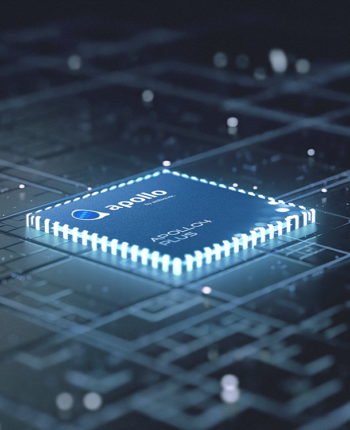The 5-Second Trick For Ambiq apollo 3
The 5-Second Trick For Ambiq apollo 3
Blog Article

They are also the engine rooms of diverse breakthroughs in AI. Consider them as interrelated brAIn parts able to deciphering and interpreting complexities in just a dataset.
Organization leaders need to channel a improve management and expansion mindset by acquiring alternatives to embed GenAI into present applications and delivering sources for self-service Studying.
You could see it as a means to make calculations like no matter if a small home ought to be priced at ten thousand pounds, or what kind Apollo3 blue of climate is awAIting from the forthcoming weekend.
Most generative models have this basic set up, but vary in the main points. Here's 3 popular examples of generative model approaches to give you a sense from the variation:
There are many major costs that come up when transferring knowledge from endpoints into the cloud, which include data transmission Strength, for a longer period latency, bandwidth, and server capability that are all elements that will wipe out the worth of any use circumstance.
Every single application and model differs. TFLM's non-deterministic Power overall performance compounds the situation - the sole way to grasp if a specific set of optimization knobs settings performs is to test them.
Tensorflow Lite for Microcontrollers is surely an interpreter-centered runtime which executes AI models layer by layer. Determined by flatbuffers, it does an honest task producing deterministic effects (a given enter makes the identical output regardless of whether running with a Computer or embedded procedure).
The library is can be employed in two methods: the developer can choose one in the predefined optimized power settings (outlined below), or can specify their own individual like so:
much more Prompt: Photorealistic closeup video clip of two pirate ships battling one another because they sail inside of a cup of coffee.
The model incorporates the benefits of various selection trees, thereby creating projections remarkably exact and reliable. In fields including healthcare analysis, professional medical diagnostics, economic solutions etc.
Our website employs cookies Our website use cookies. By continuing navigating, we believe your permission to deploy cookies as detailed inside our Privateness Coverage.
Apollo510 also enhances its memory capability over the past era with 4 MB of on-chip NVM and 3.75 MB of on-chip SRAM and TCM, so developers have sleek development and more software versatility. For more-significant neural network models or graphics property, Apollo510 has a host of substantial bandwidth off-chip interfaces, independently effective at peak throughputs nearly 500MB/s and sustained throughput around 300MB/s.
Prompt: This close-up shot of the Victoria crowned pigeon showcases its putting blue plumage and purple upper body. Its crest is made from sensitive, lacy feathers, although its eye is a striking purple colour.
Create with AmbiqSuite SDK using your most well-liked Resource chain. We provide aid files and reference code which might be repurposed to speed up your development time. Also, our remarkable technological assistance crew is ready to assist convey your design to generation.
Accelerating the Development of Optimized AI Features with Ambiq’s neuralSPOT
Ambiq’s neuralSPOT® is an open-source AI developer-focused SDK designed for our latest Apollo4 Plus system-on-chip (SoC) family. neuralSPOT provides an on-ramp to the rapid development of AI features for our customers’ AI applications and products. Included with neuralSPOT are Ambiq-optimized libraries, tools, and examples to help jumpstart AI-focused applications.
UNDERSTANDING NEURALSPOT VIA THE BASIC TENSORFLOW EXAMPLE
Often, the best way to ramp up on a new software library is through a comprehensive example – this is why neuralSPOt includes basic_tf_stub, an illustrative example that leverages many of neuralSPOT’s features.
In this article, we walk through the example block-by-block, using it as a guide to building AI features using neuralSPOT.
Ambiq's Vice President of Artificial Intelligence, Carlos Morales, went on CNBC Street Signs Asia to discuss the power consumption of AI and trends in endpoint devices.
Since 2010, Ambiq has been a leader in ultra-low power semiconductors that enable endpoint devices with more data-driven and AI-capable features while dropping the energy requirements up to 10X lower. They do this with the patented Subthreshold Power Optimized Technology (SPOT ®) platform.
Computer inferencing is complex, and for endpoint AI to become practical, these devices have to drop from megawatts of power to microwatts. This is where Ambiq has the power to change industries such as healthcare, agriculture, and Industrial IoT.
Ambiq Designs Low-Power for Next Gen Endpoint Devices
Ambiq’s VP of Architecture and Product Planning, Dan Cermak, joins the ipXchange team at CES to discuss how manufacturers can improve their products with ultra-low power. As technology becomes more sophisticated, energy consumption continues to grow. Here Dan outlines how Ambiq stays ahead of the curve by planning for energy requirements 5 years in advance.
Ambiq’s VP of Architecture and Product Planning at Embedded World 2024
Ambiq specializes in ultra-low-power SoC's designed to make intelligent battery-powered endpoint solutions a reality. These days, just about every endpoint device incorporates AI features, including anomaly detection, speech-driven user interfaces, audio event detection and classification, and health monitoring.
Ambiq's ultra low power, high-performance platforms are ideal for implementing this class of AI features, and we at Ambiq are dedicated to making implementation as easy as possible by offering open-source developer-centric toolkits, software libraries, and reference models to accelerate AI feature development.

NEURALSPOT - BECAUSE AI IS HARD ENOUGH
neuralSPOT is an AI developer-focused SDK in the true sense of the word: it includes everything you need to get your AI model onto Ambiq’s platform. You’ll find libraries for talking to sensors, managing SoC peripherals, and controlling power and memory configurations, along with tools for easily debugging your model from your laptop or PC, and examples that tie it all together.
Facebook | Linkedin | Twitter | YouTube Report this page